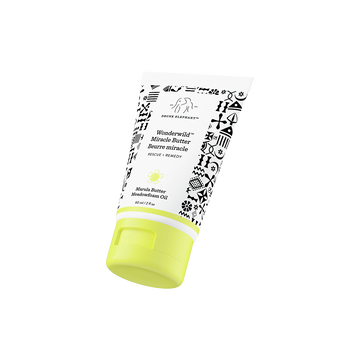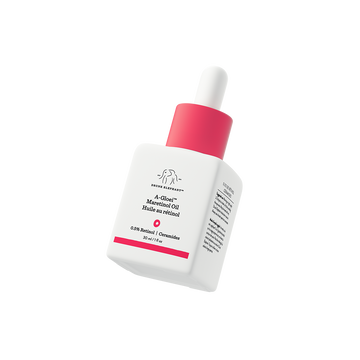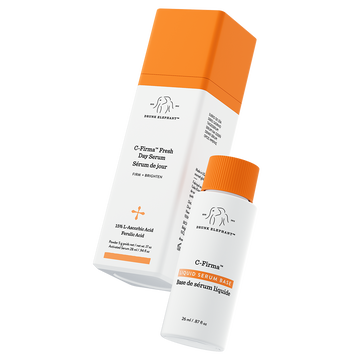6大嫌疑犯:我們的獨特哲學
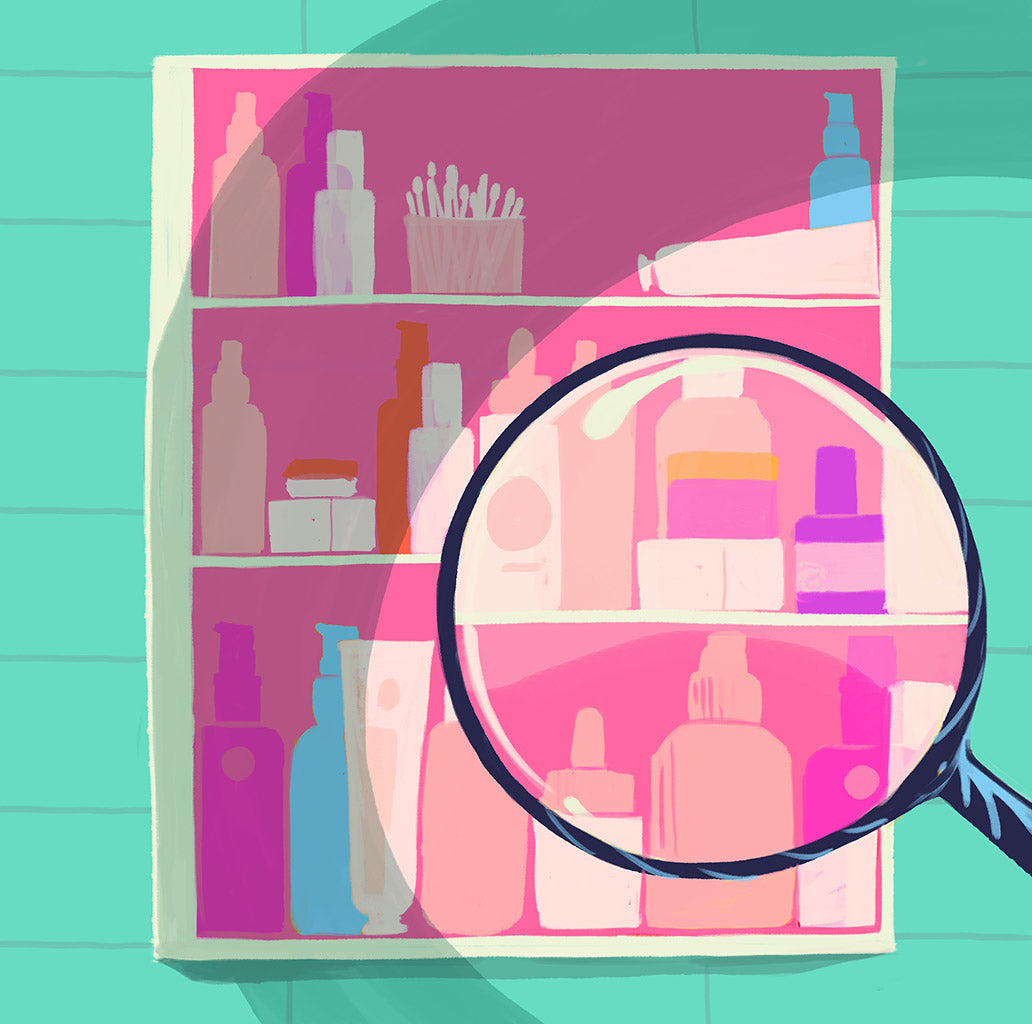
The Suspicious 6,
6大嫌疑犯:我們的獨特哲學
AUGUST 31,2021
根據個人經驗和偏好,我們總會避免使用某些成分。
排除6大嫌疑犯(Suspicious 6 )是我們獨一無二的哲學,甚且,這完全是基於科學,並得到研究支持。在這6大嫌疑犯中,最常見的是致敏物質(會導致發炎等症狀),其中香精及人工色素,和精油是最嚴重的—這個論點在科學文獻中被廣泛地接受。
我們對肌膚的老化、修復和狀況(例如:長痘痘)…等的了解,源自於對肌膚面臨刺激時的反應做深入探討。大家普遍認為,任何會導致肌膚發炎的狀況,都會加劇爆痘(發炎反應的一種)、曬傷(也是一種炎症)和不均勻的膚色及質地(發炎也會加劇和惡化這兩種情形)…等問題。 [1,5,6,7]
刺激和發炎會降低肌膚的修復能力,同時也會破壞主要的支撐物質(膠原蛋白和彈性蛋白),並減少酸性保護膜中的要角—例如,神經醯胺、玻尿酸和抗氧化劑。接觸刺激肌膚並使其發炎的成分,會讓肌膚更容易受到環境壓力源(如陽光、煙霧和污染)的傷害。 [2,3]
環境刺激會引起發炎,這種傷害會一直累積在肌膚內。結果是讓膠原蛋白和彈性蛋白劣化,修復能力受損,甚至放大了環境自由基對肌膚的損害。 [5,6,7,13,26,37]
發炎對肌膚的傷害是累積的—無論目前是否看得到跡象;隨著時間、反復接觸刺激物,會導致肌膚屏障減弱、修復緩慢(包括紅色痘疤)和膚色不均現象。 [5,2,7,25,38]
去除會引起刺激和發炎反應的物質,不僅能減少不必要的傷害,而且有益於肌膚整體及維持健康狀態。
發炎反應也是我們認同的許多「問題肌膚」的根源。例如,刺激會觸發毛孔中的神經末梢,進而觸發雄性激素的產生;而雄性激素是增加油脂分泌的激素。 [3,4]
由於痘痘也是一種發炎的症狀,減少發炎症狀就會減少長痘。但如果肌膚繼續受到刺激,也會繼續發炎,加重爆痘並延遲修復。 [3,4,21,22,23,24]
肌膚長期乾燥的主要原因是:無法保持其中的水分含量。發炎反應和刺激會破壞肌膚留住重要脂肪酸、潤膚油脂,和其它能保持肌膚柔軟和柔韌的物質。隨著時間,肌膚再無法維持這些物質的健康程度,導致乾燥、脫屑,以及在肌膚屏障引起發炎反應。 [14,15,27]
基於這背後的科學,我們相信:去除已知會引起刺激和發炎反應的物質,不僅會減少不必要的傷害,而且有益於肌膚整體及維持健康狀態。
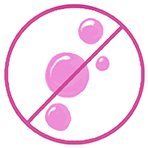
SLS十二烷基硫酸鈉
SLS被認為是一種廣泛性的刺激物,它被當作是測量其它成分對肌膚刺激程度的標準值。換句話說,在科學研究中,當研究人員想要確定某種成分是否對皮膚有害時,他們會將其效果與SLS的效果進行比較。 [33] 2%至5%的SLS會引起過敏或致敏反應。 [46,47]
雖然,有些人可能喜歡使用含有SLS的保養品—那種乾淨利落的感覺,但它很可能也顯示:肌膚已經受到刺激,而且問題會繼續惡化。 [16]
同樣值得注意的是,許多使用刺激性表面活性劑(如SLS)的清潔產品,呈現鹼性(即pH值大於8.0);與使用溫和的表面活性劑,pH 值更接近皮膚(即 5.5 左右)相比之下,鹼性的清潔產品會引起刺激,並增加細菌的存在,從而對肌膚的酸性保護膜產生負面影響。[17,18,19,20]
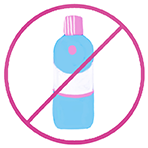
酒精
含有酒精的產品,通常在它的成分列表中,會顯示為「變性酒精」(SD alcohol、denatured alcohol、alcohol denat.)、「穀醇」(grain alcohol)、「乙醇」(ethyl alcohol),或只是直白的「酒精」(alcohol)。不管用什麼名詞,它都會降低肌膚潤澤及保濕的能力,並可能導致油脂分泌旺盛。 [4,3,24]
雖然酒精確實可以增強活性成分的滲透,但它是通過溶解和分解酸性保護膜中的重要脂質來實現的—而正是這些物質可以讓您的肌膚長期保持健康。 [30]
事實上,在經常和長時間接觸含酒精的配方後,肌膚的酸性保護膜,會變得無法防止水和清潔劑在洗臉時滲透,進一步侵蝕肌膚的保護屏障。 [31]
諷刺的是,使用含酒精成分的抗痘產品、或控油產品時,它們其實會導致粉刺增多、毛孔粗大、毛孔內油脂分泌增加以及發炎症狀加劇。 [21,22,29]
研究顯示,即使使用低濃度,酒精(乙醇)也會造成自由基對肌膚傷害。在一項研究中,在實驗室環境中將3%的酒精(保養品中的酒精含量,可能從5%到60%或更高),於48小時內應用於肌膚細胞,會導致細胞死亡增加26%,並減少抗發炎細胞因子,同時促進自由基傷害肌膚。細胞暴露在酒精中的時間越長,這種損傷就越嚴重。也就是說,48小時的接觸比24小時的危害要大得多,而且是在濃度僅為3%的情況下。 [32]
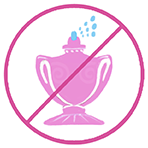
香精及人工色素
經常使用含有香精的產品,無論是天然、還是合成的,都會導致慢性發炎,從而損害健康的膠原蛋白生成,惡化肌膚狀況(乾燥、油脂分泌過多、長痘痘),並損害肌膚的修復能力。 [5,6,10,11,12]
香精及人工色素(又名染料),無論是天然、還是合成的,都是保養品會致敏的主要原因。 [11,36,41]
過敏反應可能馬上發生,或隨著時間而累積;有時,當使用多種含香精的產品時,肌膚會達到臨界點並突然過敏,而且常會強烈地發作。 [2,5,7]
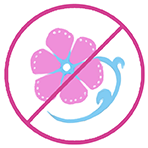
精油
由於,有全面性的研究(見上文),我們普遍了解天然、或合成香精的負面影響。但精油的害處特別的隱晦—因為其複雜的化學結構,以及可能暴露於紫外線和氧氣時,產生連鎖反應,加劇了它們傷害肌膚的可能性。 [10,11,28,29,34,35,36,39,40,41]
這是由於精油存在一類稱為呋喃香豆素(補骨脂素)和香豆素的成分,它們是肌膚暴曬在陽光下時發生「光毒素反應」的主因,結果會導致肌膚變色。 [42,43,44,45]
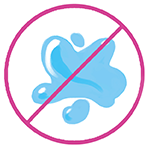
化學防曬成分
多種活性成分—根據它們的組合和穩定方式,可提供不同程度的抗紫外線UVA和UVB保護。在美國,avobenzone、oxybenzone、octocrylene、octinoxate和octisalate 都是常見的例子。[50]
但我們避免使用此類的活性成分,因為許多人發現它們具有刺激性,尤其是在眼部周圍使用時。刺激成分對所有肌膚都是有害的,尤其對於患有酒糟性皮膚炎或濕疹等皮膚病的人來說,更是如此。 [5,6,7,48,49,50,51]
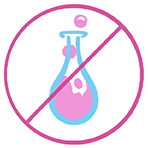
矽靈
我們避免使用矽靈,因為它們可能會「套住」活性成分,從而降低其「生物可利用性」,而且我們更喜歡能為肌膚提供全面效益的其它選擇。我們發現消費者更喜歡這種方法,許多人都認為矽靈的存在對他們的肌膚有害(引發痘痘和肌膚不適)。
參考文獻出處:
[1] Thornfeldt C. Chronic inflammation is etiology of extrinsic aging. J Cosmet Dermatol. 2008;7(1):8-82.
[2] Basketter D, Darlenski R, Fluhr J. Skin irritation and sensitization: mechanisms and new approaches for risk assessment. Skin Pharmacol Physiol. 2008.;21(4):191-202.
[3] Jeremy A, Holland D, Roberts S, Thomson K, Cunliffe W. Inflammatory events are involved in acne lesion initiation. J Invest Dermatol. 2003;121(1):20-7.
[4] Tanghetti E. The role of inflammation in the pathology of acne. J Clin Aesthet Dermatol. 2013;6(9):27-35.
[5] Baumann L. Skin ageing and its treatment. J Pathol. 2007;211(2):241-51.
[6] Puizina-Ivić N. Skin aging. Acta Dermatovenerol Alp Pannonica Adriat. 2008;17(2):47-54.
[7] Rabe J, Mamelak A, McElgunn P, Morison W, Sauder D. Photoaging: Mechanisms and repair. J Am Acad Dermato. 2006;55(1):1-19.
[10] Bakkalia F, Averbeck S, Averbeck D, Idaomar M. Biological effects of essential oils - A review. Food Chem Toxicol. 2008;46(2):446-475.
[11] Johansen J. Fragrance contact allergy: a clinical review. 2003. Am J Clin Dermatol.;4(11):798-98.
[12] Jack A, Norris P, Storrs F. Allergic contact dermatitis to plant extracts in cosmetics. Semin Cutan Med Surg. 2013;32(3):140-6.
[13] Poljsak B, Dahmane R. Free radicals and extrinsic skin aging. Dermatol Res Pract. 2012;2012:135206.
[14] Harding C, Watkinson A, Rawlings A, Scott I. Dry skin, moisturization and corneodesmolysis. Int J Cosmet Sci. 2000;22(1):21-52.
[15] Rawlings A. Trends in stratum corneum research and the management of dry skin conditions. Int J Cosmet Sci. 2003;25(1-2):63-95.
[16] Gabard B, Chatelain E, Bieli E, Haas S. Surfactant irritation: in vitro corneosurfametry and in vivo bioengineering. Skin Res Technol. 2001;7(1):49-55.
[17] Gfatter R, Hackl P, Braun F. Effects of soap and detergents on skin surface pH; stratum corneum hydration and fat content in infants. Dermatology. 1997;195(3):358-62.
[18] Korting H, Braun-Falco O. The effect of detergents on skin pH and its consequences. Clin Dermatol. 1996;14(1):23-7.
[19] Schmid M, Korting H. The concept of the acid mantle of the skin: its relevance for the choice of skin cleansers. Dermatology. 1995;191(4):276-80.
[20] Baranda L, González-Amaro R, Torres-Alvarez B, Alvarez C, Ramírez V. Correlation between pH and irritant effect of cleansers marketed for dry skin. Int J Dermatol. 2002;41(8):494-9.
[21] Kurokawa I, Danby F, Ju Q, Wang X, Xiang L, Xia L, Chen W, Nagy I, Picardo M, Suh D, et al. New developments in our understanding of acne pathogenesis and treatment. Exp Dermatol. 2009;18(10):821-32.
[22] Toyoda M, Nakamura M, Morohashi M. Neuropeptides and sebaceous glands. Eur J Dermatol. 2002;12(5):422-7.
[23] Toyoda M, Morohashi M. New aspects in acne inflammation. Dermatology. 2003;206(1):17-23.
[24] Bhate K, Williams H. Epidemiology of acne vulgaris. Br J Dermatol. 2013;168(3):474-485.
[25] Salminen A, Kaarniranta K, Kauppinen A. Inflammaging: disturbed interplay between autophagy and inflammasomes. Aging. 2012;4(3):166-75.
[26] Franceschi C, Capri M, Monti D, Giunta S, Olivieri F, Sevini F, Panourgia M, Invidia L, Celani L, Scurti M, et al. Inflammaging and anti-inflammaging: a systemic perspective on aging and longevity emerged from studies in humans. Mech Ageing Dev. 2007;128(1):92-5.
[27] Vestergaard C, Hvid M, Johansen C, Kemp K, Deleuran B, Deleuran M. Inflammation-induced alterations in the skin barrier function: implications in atopic dermatitis. Chem Immunol Allergy. 96:77-80. 2012;96:77-80.
[28] Kejlová K, Jírová D, Bendová H, Gajdoš P, Kolářová H. Phototoxicity of essential oils intended for cosmetic use. Toxicol In Vitro. 2010;24(8):2084-9.
[29] Tschiggerl C, Bucar F. Volatile fraction of lavender and bitter fennel infusion extracts. Nat Prod Commun. 2010;5(9):1431-6.
[30] Kwak S, Brief E, Langlais D, Kitson N, Lafleur M, Thewalt J. Ethanol perturbs lipid organization in models of stratum corneum membranes: An investigation combining differential scanning calorimetry; infrared and (2)H NMR spectroscopy. Biochim Biophys Acta. 2012;1818(5):1410-9.
[31] Kownatzki E. Hand hygiene and skin health. J Hosp Infect. 2003;55(4):239-45.
[32] Neuman M, Haber J, Malkiewicz I, Cameron R, Katz G, Shear N. Ethanol signals for apoptosis in cultured skin cells. Alcohol. 2002;26(3):179-90.
[33] Robinson V, Bergfeld W, Belsito D, Hill R, Klaassen C, Marks JJ, Shank R, Slaga T, Snyder P, Andersen A. Final report of the amended safety assessment of sodium laureth sulfate and related salts of sulfated ethoxylated alcohols. Int J Toxicol. 2010;29(4S):151S-61S.
[34] Kaddu S, Ker lH, Wolf P. Accidental bullous phototoxic reactions to bergamot aromatherapy oil. J Am Acad Dermatol. 2001;45(3):458-61.
[35] Yasui Y, Hirone T. Action spectrum for bergamot-oil phototoxicity measured by sunburn cell counting. J Dermatol. 1994;21(5):319-22.
[36] Nardelli A, D’Hooghe E, Drieghe J, Dooms M, Goossens A. Allergic contact dermatitis from fragrance components in specific topical pharmaceutical products in Belgium. Contact Dermatitis. 2009;60(6):303-13.
[37] Zuang V, Rona C, Archer G, Berardesca E. Detection of Skin Irritation Potential of Cosmetics by Non-Invasive Measurements. Skin Pharmacol Appl Skin Physiol. 2000.;13:358-371.
[38] Perkins M, Osterhues M, Farage M, Robinson M. A noninvasive method to assess skin irritation and compromised skin conditions using simple tape adsorption of molecular markers of inflammation. Skin Res Technol. 2001;7(4):224-37.
[39] Higgins C, Palmer A, Nixon R. Eucalyptus oil: contact allergy and safety. Contact Dermatitis. 2015;72(5):344-6.
[40] Nielsen J. Natural oils affect the human skin integrity and the percutaneous penetration of benzoic acid dose-dependently. Basic Clin Pharmacol Toxicol. 2006;98(6):575-81.
[41] Dinkloh A, Worm M, Geier J, Schnuch A, Wollenberg A. Contact sensitization in patients with suspected cosmetic intolerance: results of the IVDK 2006-2011. J Eur Acad Dermatol Venereol. 2015;29(6):1071-81.
[42] Ibuki Y, Toyooka T. Evaluation of chemical phototoxicity, focusing on phosphorylated histone H2AX. J Radiat Res. 2015;56(2):220-228.
[43] Hata T, Sakaguchi I, Mori M, Ikeda N, Kato Y, Minamino M, Watabe K. Induction of apoptosis by Citrus paradisi essential oil in human leukemic (HL-60) cells. In Vivo. 2003;17(6):553-9.
[44] Njoroge S, Koaze H, Karanja P, Sawamura M. Volatile constituents of redblush grapefruit (Citrus paradisi) and pummelo (Citrus grandis) peel essential oils from Kenya. J Agric Food Chem. 2005;53(25):9790-4.
[45] Dugrand A, Olry A, Duval T, Hehn A, Froelicher Y, Bourgaud F. Coumarin and furanocoumarin quantitation in citrus peel via ultraperformance liquid chromatography coupled with mass spectrometry (UPLC-MS). J Agric Food Chem. 2013;61(45):10677-84.
[46] Löffler H, Pirker C, Aramaki J, Frosch P, Happle R, I. E. Evaluation of skin susceptibility to irritancy by routine patch testing with sodium lauryl sulfate. Eur J Dermatol. 2001;11(5):416-9.
[47] Löffler H, Freyschmidt-Paul P, Effendy I, Maibach H. Pitfalls of irritant patch testing using different test chamber sizes. Am J Contact Dermat. 2001;12(1):28-32.
[48] Kerr A, Ferguson J. Photoallergic contact dermatitis. Photodermatol Photoimmunol Photomed. 2010;26:56–65.
[49] Heurung AR, Raju SI, Warshaw EM. Adverse reactions to sunscreen agents: epidemiology, responsible irritants and allergens, clinical characteristics, and management. Dermatitis. 2014 Nov-Dec;25(6):289-326
[50] Moloney FJ, Collins S, Murphy GM. Sunscreens: safety, efficacy and appropriate use. Am J Clin Dermatol. 2002;3(3):185-91.
[51] Krause M, Klit A, Blomberg Jensen M, Søeborg T, Frederiksen H, Schlumpf M, Lichtensteiger W, Skakkebaek NE, Drzewiecki KT. Sunscreens: are they beneficial for health? An overview of endocrine disrupting properties of UV-filters. Int. J. Androl. 2012 Jun;35(3):424-36.



 醉象
醉象



